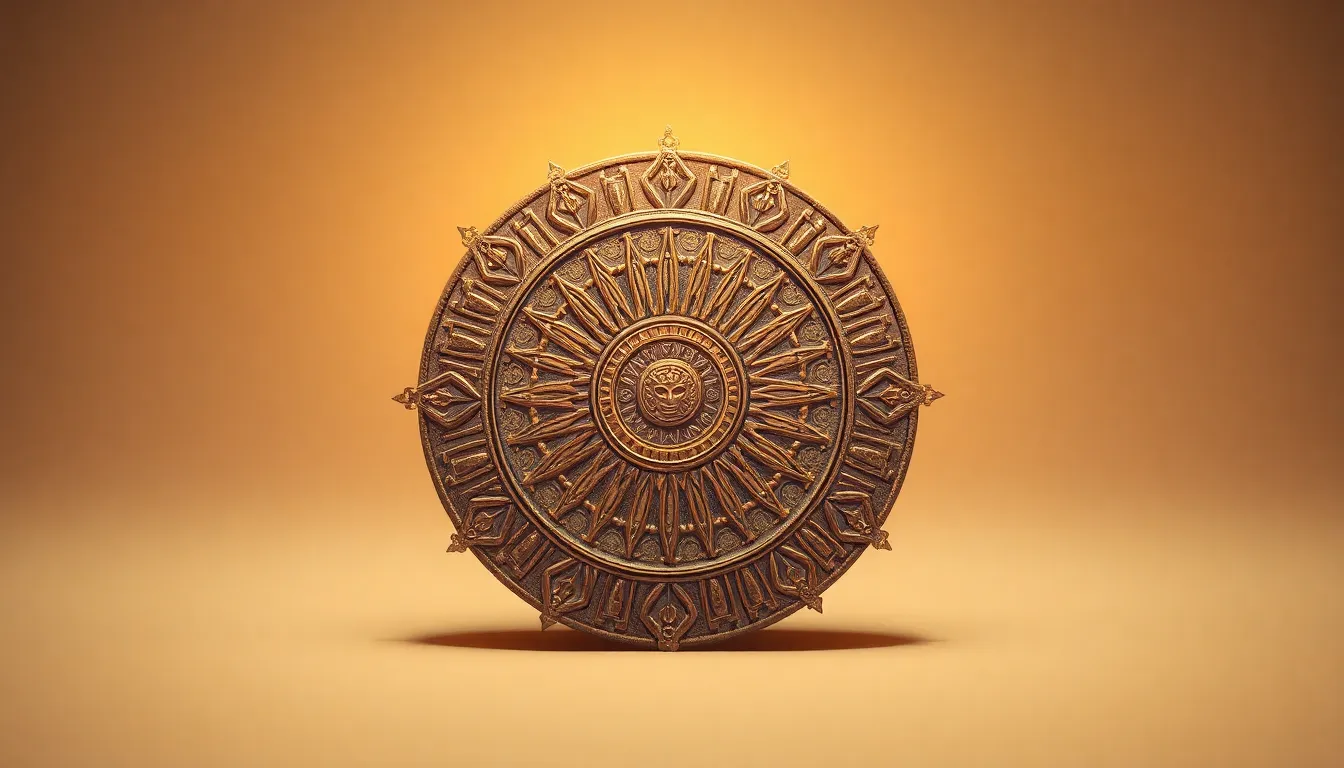The Spiritual Significance of the Egyptian Sun Disk
I. Introduction
The Egyptian Sun Disk, often depicted as a circular disk with rays extending outward, holds a significant place in ancient Egyptian culture and spirituality. It symbolizes the life-giving power of the sun, reflecting the beliefs and practices of a civilization that revered celestial bodies. The Sun Disk was not merely a visual motif; it embodied the essence of existence, influencing various aspects of daily life, governance, and spiritual practice in ancient Egypt.
II. Historical Context
The origins of the Sun Disk can be traced back to the earliest periods of ancient Egyptian civilization. Initially associated with the sun god Ra, it later evolved to encompass Aten, the sun deity worshipped during the reign of Pharaoh Akhenaten. The transition from Ra to Aten highlights the changing dynamics of religious beliefs in ancient Egypt, where the sun was seen as both a physical entity and a divine being.
- Ra: The primary sun god, representing the midday sun and the force of creation.
- Aten: The solar disk worshipped during the Amarna Period, symbolizing a more abstract form of divinity.
This historical evolution illustrates how the Sun Disk reflected the ancient Egyptians’ understanding of their world and the cosmos, serving as a vital link between the divine and the earthly realm.
III. Symbolism of the Sun Disk
The Sun Disk is rich in symbolism, representing various concepts that were crucial to ancient Egyptian life:
- Life and Energy: The sun was seen as the source of life, providing warmth and vitality to all living things.
- Creation: The daily rising and setting of the sun symbolized the cycle of birth, death, and rebirth.
- Day and Night Cycle: The Sun Disk’s journey across the sky represented the passage of time and the order of nature.
- Seasonal Changes: The sun’s position in the sky was linked to agricultural cycles, affecting planting and harvesting.
These associations underscored the Egyptians’ profound connection to the natural world and their reverence for the sun as a divine force.
IV. The Sun Disk in Art and Architecture
In ancient Egyptian art and architecture, the Sun Disk was a prevalent motif found in various forms:
- Temples: The Sun Disk was often depicted in temple reliefs and carvings, illustrating its importance in religious practices.
- Tombs: The Sun Disk adorned the ceilings of tombs, symbolizing the deceased’s journey to the afterlife and their connection to the divine.
- Royal Insignia: Pharaohs frequently included the Sun Disk in their regalia, signifying their divine right to rule.
Through these artistic expressions, the Sun Disk served as a reminder of the enduring presence of the sun in the lives of the ancient Egyptians and their belief systems.
V. Spiritual Practices and Rituals
The Sun Disk played a crucial role in various spiritual practices and rituals throughout ancient Egypt:
- Sun Worship: Daily rituals were performed to honor the sun, ensuring its continued favor and blessings.
- Festivals: Celebrations such as the Wepet-Renpet (New Year) involved ceremonies centered around the sun’s cycles.
- Governance: Pharaohs proclaimed themselves as intermediaries between the gods and the people, often linking their authority to the power of the Sun Disk.
These practices illustrate how deeply embedded the Sun Disk was in the fabric of daily life, influencing not just spirituality but also societal structure and governance.
VI. The Sun Disk and Cosmology
The Sun Disk also occupies a significant position in ancient Egyptian cosmology:
- Creation Myths: The Sun Disk is often featured in creation myths, representing the initial spark of life that emerged from the primordial waters.
- Cosmic Order: The movement of the Sun Disk across the sky was seen as a representation of Maat, the concept of order and balance in the universe.
- Connection to Other Deities: The Sun Disk was associated with other deities, such as Horus and Osiris, integrating it into the broader mythological framework.
This relationship with cosmology underscores the Sun Disk’s importance not only as a symbol of the sun but also as a representation of the ancient Egyptians’ understanding of the universe and their place within it.
VII. Modern Interpretations and Influence
Today, the legacy of the Sun Disk continues to resonate in contemporary spirituality and art:
- New Age Spirituality: The Sun Disk is often embraced in modern spiritual practices that emphasize the connection to nature and the cosmos.
- Artistic Influences: Contemporary artists draw inspiration from ancient Egyptian motifs, including the Sun Disk, to explore themes of divinity and existence.
- Cultural Impact: The Sun Disk remains a symbol of enlightenment and energy in various cultures, reflecting its enduring significance.
These modern interpretations highlight the flexibility and relevance of the Sun Disk in today’s spiritual landscape, showcasing its lasting influence beyond ancient Egypt.
VIII. Conclusion
In summary, the Egyptian Sun Disk holds profound spiritual significance that transcends its ancient origins. As a symbol of life, energy, and creation, it played a crucial role in the religious practices, art, and cosmology of ancient Egypt. Its impact continues to be felt in contemporary spirituality and artistic expression, reflecting a timeless connection to the sun and the cycles of nature. The enduring legacy of the Sun Disk serves as a reminder of the deep spiritual insights of the ancient Egyptians and their understanding of the universe.




